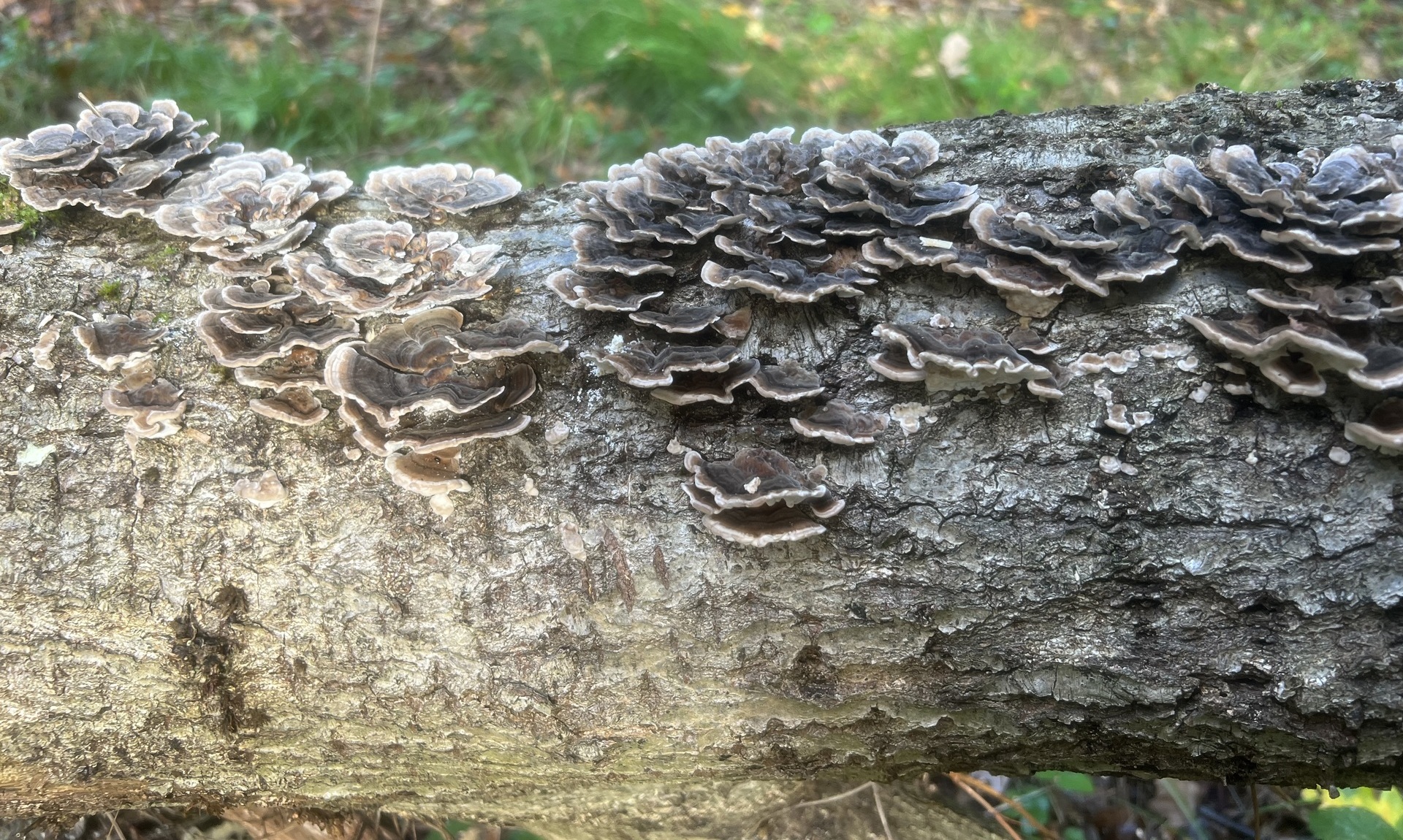Finding Fungi
Posted on 19th October 2022 at 15:22

Pleurotus ostreatus (Oyster fungus)

Fomes fomentarius (Hoof fungus)

Laetiporus sulphureus (Chicken of the woods)

Armillaria mellea (Honey fungus)

Ganoderma applanatum/australe (Artist Fungus)
Finding Fungi...
The time of year for fallen leaves and mushrooms has arrived. We always enjoy seeing the variety of fungal brackets and mushrooms that autumn brings, many of which emerge from trees, or close by. When studying Arboriculture, we learn all about Fungi and the different relationships they have with trees, the good, the bad and the ugly.
It's good to know that not all species of fungi cause damage to trees. Some form a symbiotic relationship and co-exist without causing any harm to one another. For example, those feeding on deadwood cause no harm to the trees health or structure and actually aid the tree by breaking down organic matter into minerals and nutrients, which is then fed back to the tree in the soil. But there are fungi that cause their tree host to become structurally unstable, by causing decay in the roots, stems and leaves.
"Decay is, however, not a disease; it is a normal consequence of aging and/or injury in trees, which releases minerals nutrients that have been locked up in their wood and provides habitat for other species. In fact, hollowing is a perfectly natural occurrence and is seen as a co-evolutionary relationship between the tree, fungi, bacteria and other micro-organisms. Depending on the species of fungus and of the host tree, the two can often co-exist for centuries; sometimes even for millennia." Dr David Lonsdale - References
Watson, G. and Green, T., 2011. Fungi on Trees. 1st ed. Gloucestershire: The Arboricultural Association, p.4.
What should you do if you find mushrooms on or around your tree?
Do your research!
We would recommend an app called TMA Fungi. You can specify the tree, location and see a list of fungi that are commonly found in those locations, with photos and information to help. Alternatively, the web has plenty of helpful info, such as the The Woodland Trust, and The Tree Guide.
Ask an Arborist!
Find a tree surgeon/arborist that know their Fungi. They can help identify the type of Fungi and advise if it is harmful to your tree. They may recommend you have a PiCUS Test - a non-invasive test untaken with an instrument that measures the thickness of the residual wall of trees with internal defects such as cavities or decay non-invasively. This test can identify the extent of the fungi inside the tree and how structurally sound the tree is.
Leave it be!
If the tree is unlikely to cause any harm to any person or property if the worst was to happen, then leave it alone and let nature take its course. Trees provide plenty of habitat for wildlife, mammals, insects, beetles and birds, even more so when they have decay and hollows.

Pholiota squarrosa (Shaggy Phliota)

Bjerkandera adusta (Smoky polypore)

Meripilus giganteus (Giant Polypore)

Fistulina hepatica (Beef steak fungus)

Armillaria mellea (Honey fungus)
This content will only be shown when viewing the full post. Click on this text to edit it.
Share this post:



